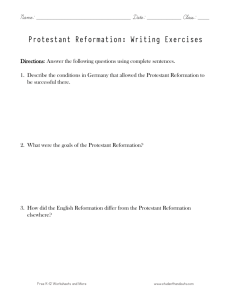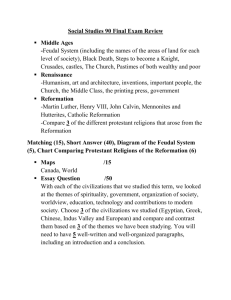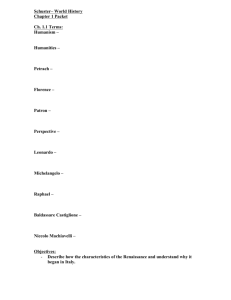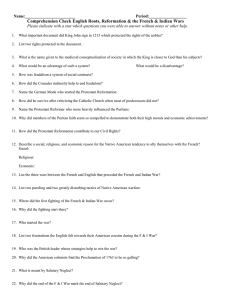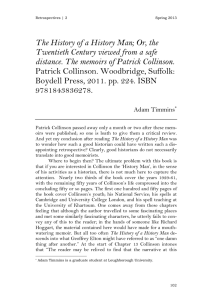Sites of Change in Reformation England
advertisement
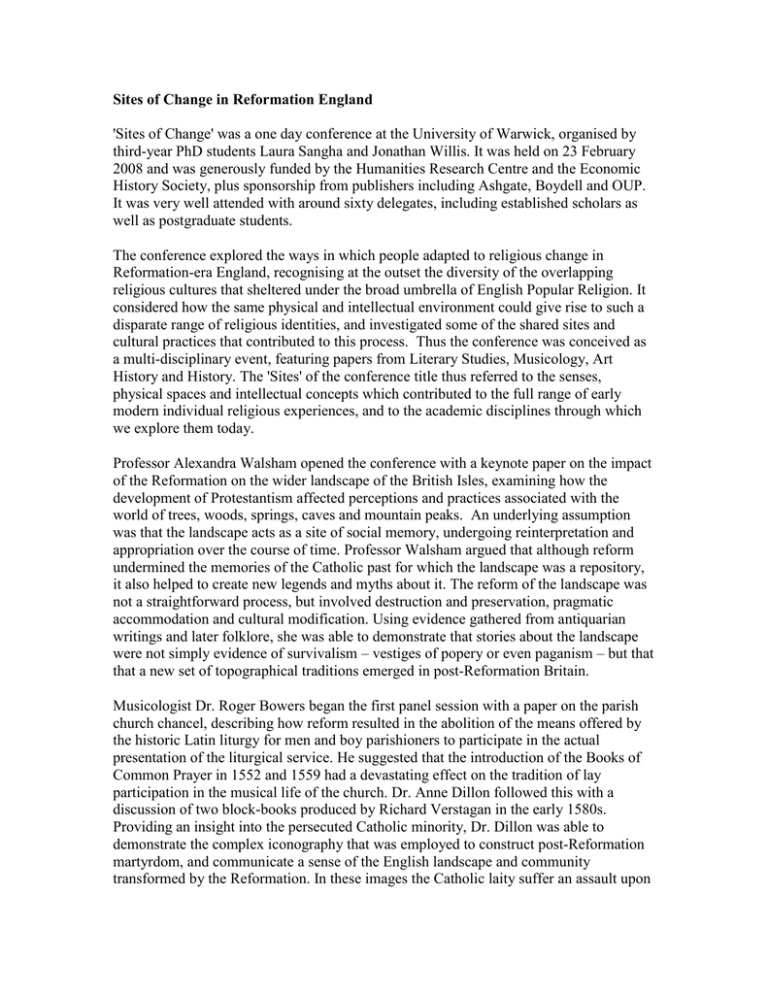
Sites of Change in Reformation England 'Sites of Change' was a one day conference at the University of Warwick, organised by third-year PhD students Laura Sangha and Jonathan Willis. It was held on 23 February 2008 and was generously funded by the Humanities Research Centre and the Economic History Society, plus sponsorship from publishers including Ashgate, Boydell and OUP. It was very well attended with around sixty delegates, including established scholars as well as postgraduate students. The conference explored the ways in which people adapted to religious change in Reformation-era England, recognising at the outset the diversity of the overlapping religious cultures that sheltered under the broad umbrella of English Popular Religion. It considered how the same physical and intellectual environment could give rise to such a disparate range of religious identities, and investigated some of the shared sites and cultural practices that contributed to this process. Thus the conference was conceived as a multi-disciplinary event, featuring papers from Literary Studies, Musicology, Art History and History. The 'Sites' of the conference title thus referred to the senses, physical spaces and intellectual concepts which contributed to the full range of early modern individual religious experiences, and to the academic disciplines through which we explore them today. Professor Alexandra Walsham opened the conference with a keynote paper on the impact of the Reformation on the wider landscape of the British Isles, examining how the development of Protestantism affected perceptions and practices associated with the world of trees, woods, springs, caves and mountain peaks. An underlying assumption was that the landscape acts as a site of social memory, undergoing reinterpretation and appropriation over the course of time. Professor Walsham argued that although reform undermined the memories of the Catholic past for which the landscape was a repository, it also helped to create new legends and myths about it. The reform of the landscape was not a straightforward process, but involved destruction and preservation, pragmatic accommodation and cultural modification. Using evidence gathered from antiquarian writings and later folklore, she was able to demonstrate that stories about the landscape were not simply evidence of survivalism – vestiges of popery or even paganism – but that that a new set of topographical traditions emerged in post-Reformation Britain. Musicologist Dr. Roger Bowers began the first panel session with a paper on the parish church chancel, describing how reform resulted in the abolition of the means offered by the historic Latin liturgy for men and boy parishioners to participate in the actual presentation of the liturgical service. He suggested that the introduction of the Books of Common Prayer in 1552 and 1559 had a devastating effect on the tradition of lay participation in the musical life of the church. Dr. Anne Dillon followed this with a discussion of two block-books produced by Richard Verstagan in the early 1580s. Providing an insight into the persecuted Catholic minority, Dr. Dillon was able to demonstrate the complex iconography that was employed to construct post-Reformation martyrdom, and communicate a sense of the English landscape and community transformed by the Reformation. In these images the Catholic laity suffer an assault upon family and home and are branded as traitors, an experience which is related to wider religious themes of suffering and redemption through the use of subtle visual cues scattered throughout the images. The second panel session saw Professor Brian Cummings deliver a lively paper on the tormented issue of Shakespeare’s religion through an examination of place in several of his plays. Using the themes of fairies and the pastoral Professor Cummings posed questions about the elusive nature of Shakespeare’s sense of place, the insistent but transient interest in landscape, the sense of the past that this evoked and its relationship with the religious nostalgia of the last decade of the reign of Elizabeth. Dr. Tara Hamling then gave a paper on the place of image and object in the Protestant domestic interior, investigating the widespread fashion for religious imagery in the decoration of walls, ceilings and chimneypieces in larger town and country houses throughout England. She demonstrated that the choice of iconography and material represented a degree of continuity with the pre-Reformation past, but that the imagery was also used to support specifically Protestant practices of household religious observance. There was an explicit connection between Protestant devotional and conduct literature and domestic imagery, so the later placed spiritual concerns at the heart of domestic life, regulating behaviour and habits of thought and prompting pious meditation. Professor Patrick Collinson introduced the closing round table. He reflected on the current state of Reformation historiography and identified two recent trends, ‘the return of confessionalism’ and ‘the transcendence of confessionalism’. With regard to the first theme Professor Collinson lauded the recent interest in all aspects of religious cultures within England, particularly the reassessment of pre-Reformation culture and the postReformation Catholic community. He combined this with a gentle reminder not to pursue these new avenues of research at the expense of continuing research into mainstream Protestant religion, in all its forms. The latter theme Professor Collinson felt was a promising and potentially very fruitful development, which had resulted in the lines between Catholicism and Protestantism being blurred and finessed. Investigations of subject matter as diverse as iconography, landscape, material culture, print, angels, and music mean that this is ‘an extraordinarily exciting time’ in reformation studies, and ‘Sites of Change’ had captured this spirit. The wide-ranging discussion prompted by Professor Collinson’s comments provided the opportunity for debate on the post-revisionist moment, the relationship between religious exiles and the English laity, English exceptionalism, confessionalisation, the question of whether ‘appropriation’ is a symptom of continuity or change, the internal contradictions that sometimes typify confessional identities, and the nature of the ‘Long’ Reformation. The conference was ultimately successful in achieving its aims as it gave different disciplinary practitioners the opportunity to co-operate with each other in an attempt to further illuminate the mental universe of the early modern laity.
